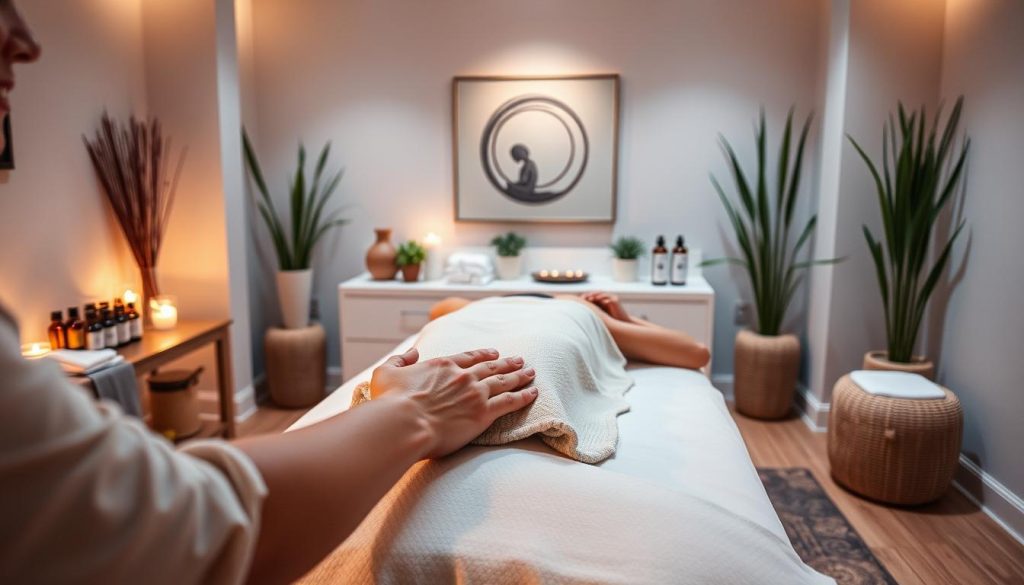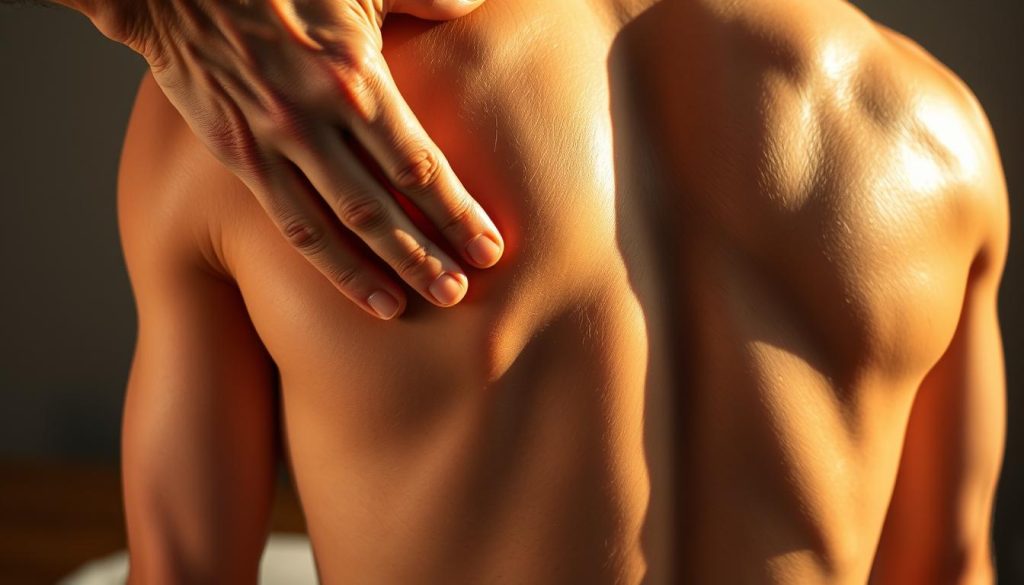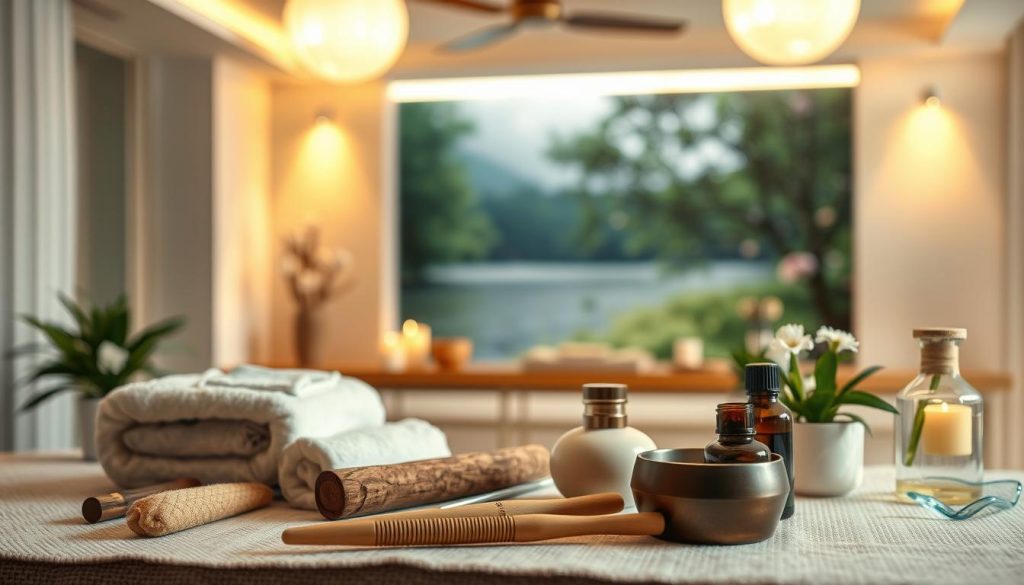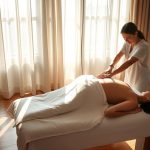Have you ever wondered which approach will actually ease your tight shoulders or help you sleep better?
Step in with purpose. This brief guide distills core methods used by trained massage therapists and shows how each approach supports relaxation, pain relief, and improved movement.
You’ll find clear descriptions of strokes like gliding and kneading, plus why deeper work helps chronic knots. Practical notes on training and standards — such as supervised clinics and required education hours — help you pick a qualified provider in Turkey and beyond.
Along the way, you’ll learn the words therapists use so you can ask for the pressure and results you want. If you want a quick primer on common methods and their benefits, this section sets the map so you can book your next session with confidence.
Key Takeaways
- Core strokes like effleurage and petrissage form the backbone of many approaches.
- Different technique types target relaxation, pain relief, or mobility.
- Training and supervised practice matter when you choose a practitioner; see programs such as core method overviews.
- Regular sessions can lower stress and improve sleep and circulation.
- Knowing the vocabulary helps you get the exact pressure and outcome you want.
Why These Massage Techniques Matter for Your Relaxation, Relief, and Recovery
Different therapy methods target either nervous system calm or deeper muscle repair. Scientific reviews used in training note consistent benefits: less anxiety and stress, improved sleep, better circulation, and relief for chronic tension headaches.
Light strokes soothe the nervous system and lower stress fast. Firmer work reaches deeper connective tissue and eases chronic pain by breaking up tight bands and improving blood flow.
Sports-oriented sessions prepare your body before an event or speed recovery after. They mobilize soft tissue, boost oxygen flow, and reduce post-activity soreness so you return to training sooner.
You want a session that meets your needs today. Knowing how a specific technique works helps you ask for targeted relief, full-body relaxation, or performance support.
- Short visits can soften neck and shoulder tightness quickly.
- Longer sessions can combine goals: pain relief, sleep support, and mobility gains.
- Talk with your therapists about pressure, areas to protect, and desired outcomes.
For guidance on which health issues respond well to manual work, see massage therapy benefits.
The Most Popular Massage Techniques We Learned from Massage Therapists
Expect to notice calm settling into your shoulders as a session moves from gentle glides to targeted pressure. That progression helps you relax while therapists address deeper tight spots.
What you’ll feel: relaxation, reduced tension, and improved circulation
Gliding strokes ease your nervous system and invite rest. Focused work, like trigger point holds, melts stubborn knots and restores lightness to your body.
When therapists use light vs. firm pressure for your needs
Therapists tune pressure by listening to your feedback. Lighter hands soothe and warm tissues; firmer pressure reaches deeper layers to ease chronic discomfort.

Common strokes you’ll experience: gliding, kneading, friction, tapping, and stretching
Typical sessions blend Swedish massage moves—effleurage and petrissage—with friction and rhythmic tapotement. You’ll feel kneading and stretching that improve circulation and mobility.
Who benefits most: busy professionals, athletes, and anyone seeking stress relief
Busy people gain posture resets and stress relief; athletes get targeted recovery through sports-style combo work. For a deeper look at training and practice, see a concise technique overview or explore local service options at massage services.
Foundational Relaxation Styles: Swedish, Aromatherapy, and Hot Stone
Explore three foundation styles that trainers use to teach rhythm, pressure, and soothing flow.
Swedish basics: flowing strokes and full-body calm
swedish massage is a core method in many training programs. It relies on effleurage, petrissage, friction, and tapotement to ease tension and improve circulation.
You’ll feel long, flowing strokes and gentle kneading that help you relax from head to toe.
For a detailed primer, read this overview on swedish massage.
Aromatherapy: scent plus touch for mood support
Aromatherapy layers essential oils—lavender, eucalyptus, chamomile, peppermint—into your session. Oils may be applied topically or used via diffuser to enhance mood and stress relief.
Choose scents that match your goal: calm, focus, or gentle uplift.
Hot stones: heat-assisted release for tight areas
Hot stone therapy uses smooth basalt stones heated to about 150°F. Stones are placed on the back, hands, and feet to loosen muscle tissue before hands-on work.
Skilled handling and temperature checks keep this approach safe and deeply relaxing.
“Calmer breathing and lighter muscles after a session often lead to better sleep and easier movement the next day.”
- You’ll choose Swedish for flowing strokes and gentle pressure that quiets your mind.
- You’ll consider aromatherapy to personalize scent and mood during a session.
- You’ll opt for hot stones when heat helps tissues release faster for deeper relief.
| Style | Key tools | Primary benefits | Good for |
|---|---|---|---|
| Swedish | Effleurage, petrissage, friction, tapotement | Relaxation, circulation, gentle mobility | People new to therapy, sensitive pressure |
| Aromatherapy | Essential oils, diffuser, carrier oils | Mood support, stress relief, enhanced calm | Those seeking scent-based relaxation |
| Hot Stone | Heated basalt stones (~150°F), towels | Heat-assisted muscle release, circulation | Tight backs, shoulders, hands, feet |
To compare benefits and learn more about how manual work supports recovery, see this guide on overall massage therapy.
Targeted Therapeutic Work: Deep Tissue, Trigger Point, and Myofascial Release
Specific therapeutic methods aim to free restricted movement and quiet referral pain patterns. These approaches focus on deeper layers to solve chronic discomfort rather than only soothing surface tension.
Deep tissue
Deep tissue uses slower, firmer strokes that reach connective tissue and tight muscle. This approach helps posture-related strain and long-standing muscle tension.
You and your therapist will agree on a comfort scale so pressure fits your tolerance. Sessions move deliberately to avoid overworking fragile areas.
Trigger point therapy
This precise method applies sustained pressure to knots that send pain to other parts of the body. Release is often followed by stretching or lighter massage to ease referral patterns.
Myofascial release
Myofascial work eases tight fascia with gentle holds and assisted glides. It restores mobility when movement feels capped and helps tissues slide more freely.
“Targeted work can transform stubborn areas—freeing your neck, shoulders, and hips so daily movement becomes easier.”
- You’ll pick deep tissue for chronic tightness or posture-related discomfort.
- You’ll choose trigger point when knots cause referred pain across areas.
- You’ll explore myofascial release when movement feels restricted and stiff.
- Hydration, light movement, and rest after a session help tissue integrate the work.

Performance and Movement Methods: Sports Massage and Thai Massage
Performance-focused treatments blend hands-on release and active stretching to support movement and stamina. These options suit athletes and active clients who need targeted care during training cycles.
Sports massage: pre-event prep, post-event recovery, and flexibility for athletes
Sports massage mixes Swedish flow, deep work, and targeted stretching to prime muscles before competition or to aid recovery afterward.
You’ll book a session before an event to warm tissues and sharpen readiness, or after workouts to reduce soreness and speed recovery.
Focused work addresses overused regions so your stride stays smooth and posture stays open.
Thai massage: assisted stretching and acupressure for energy flow and mobility
Thai therapy is done clothed on a mat with assisted stretches, compressions, and acupressure using hands, elbows, and feet.
You’ll notice improved flexibility and joint glide that translate into cleaner movement for your sport.
Coordinate timing and pressure with your practitioner to match taper, peak, or rest phases in training.
- Use sports massage to prime or restore muscles around events.
- Choose Thai to build range safely through guided movement and breath.
- Finish every session with hydration, gentle mobility, and rest to lock in gains.
Read a detailed sports massage guide to plan timing and pressure for your next performance-focused visit.
Specialized Approaches for Specific Needs
Specialized care adapts touch and positioning to address pregnancy, cancer recovery, or quick workplace resets.
Prenatal care uses mild pressure and safe positions to ease lower back, hips, and leg discomfort. You should get medical approval before booking, and many therapists avoid work in the first trimester.
Oncology comfort
Oncology sessions are adjusted for treatment stage and sensitivity. Trained professionals change pressure, pace, and positioning to help sleep, ease fatigue, and support immune balance.
Reflexology and chair options
Reflexology applies targeted pressure to feet, hands, and ears to encourage system-wide relaxation without full-body touch.
Chair sessions give a fast, clothed reset for neck, shoulders, back, arms, and head in 15–30 minutes. They work well for busy clients at offices or events.
- Discuss health history so your therapist can tailor pressure and positioning.
- Notice calmer breathing as anxiety and stress ease during paced, focused work.
- Plan follow-ups for sustained relief and home care between sessions.
| Approach | Focus areas | Session length | Best outcome |
|---|---|---|---|
| Prenatal | Legs, hips, lower back | 30–60 min | Comfort in pregnancy, reduced swelling |
| Oncology | Gentle whole-body or local | 20–60 min | Symptom relief, improved rest |
| Reflexology / Chair | Feet, hands, ears / neck & shoulders | 15–30 min | Quick relaxation, lower stress |
“Short, tailored sessions can add up to meaningful relief and better daily function.”
How to Choose the Right Massage Technique for Your Body
An honest consultation at the start helps shape which approaches will best meet your needs.
Match your goals: name relaxation, pain relief, flexibility, or recovery so the session plan stays clear and purposeful.
Match your goals: relaxation, pain relief, flexibility, or recovery
You’ll begin by stating one clear aim. This guides whether therapists use a soothing full-body flow or targeted deep work.
Consider pressure preferences, areas of tension, and contraindications
Share where you feel tight and what pressure feels safe. Bring up recent injuries, surgeries, or treatments so therapy stays safe and effective.
- You’ll use a simple pressure scale to keep communication clear.
- You’ll let your therapist combine methods — for example, Swedish for calm with trigger point for tight shoulders — to get both comfort and change.
- You’ll leave with tailored self-care tips for hydration, light mobility, and breathing drills to extend benefits at home.
Choose a practitioner who listens. Good communication lets clients feel confident that each technique matches their body and goals.
What Massage Therapists Learn: Education, Techniques, and Real-World Practice
A solid program blends science, safety, and practical labs to build confident therapists. You’ll see classroom work in anatomy, physiology, ethics, medical terms, and CPR before hands-on labs begin.
Core training and curriculum
Students cover swedish massage, deep tissue, sports massage, myofascial work, and trigger point in state-approved training. New York, for example, requires at least 1,000 hours, a state exam, and current CPR for licensure.
Supervised clinics and client experience
Practical experience comes through supervised clinics. Here, students work with real clients while instructors coach pressure, pacing, and how tissue responds.
- Safety and ethics are taught so every session respects client health.
- Special topics include hot stone handling and proper essential oil use.
- Communication skills help you describe goals and give feedback during a session.
| Program | Key focus | Outcome |
|---|---|---|
| Mildred Elley | Comprehensive technique & supervised clinics | Graduates with clinic experience |
| Florida Academy | Hands-on sports massage and safety | Prepared for performance care |
| State-approved programs | Anatomy, ethics, CPR, exam prep | Licensure-ready therapists |
“You notice the difference when a therapist reads tissue response, paces pressure, and adapts technique for your comfort.”
For a deeper look at program standards and what to expect from your provider, read mastering the essentials of massage therapy.
Conclusion
Wrap up with a clear action plan so you can choose each session with intent and confidence.
You’re now equipped to pick a massage that matches relief, recovery, or flexibility goals. Ask a massage therapist to tailor strokes, pressure, and focus areas so sensitive parts of your body stay protected.
Trust that trained pros blend Swedish flow, targeted tissue work, and assisted stretches. Those combinations deliver both comfort and measurable benefits for muscle pain, mobility, and stress relief during daily life or sports cycles.
Book with purpose: state one goal, speak up about pressure, and plan follow-ups. Regular care stacks into better sleep, easier movement, and more energy as you return to work and play in Turkey or beyond.






